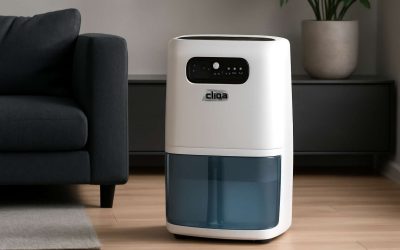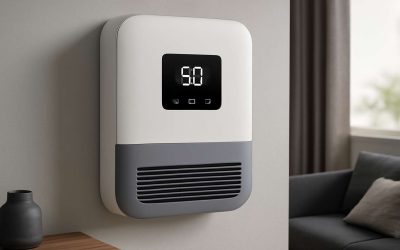
If you live in a humid climate or have experienced flooding, water damage or other moisture-related issues, a dehumidifier can help you restore your home. By removing excess moisture from the air, these appliances make it easier to breathe and reduce the risk of mold and other problems. They are available in a range of sizes and styles, from small desiccant dehumidifiers to large refrigerant models that use the power of a refrigerator’s compressor to pull moisture from the air.
Moisture can be a major problem in many areas of the home, whether it’s encouraging mold growth or making wooden structures like doors or cabinets swell and weaken. It can even cause paint and wallpaper to flake, making it more difficult to refinish or redecorate your home. Adding a dehumidifier to your home can improve comfort and make it easier to maintain a healthy indoor humidity level of 30% to 50%.
A dehumidifier works by pulling moisture from the air and storing it in its internal tank or continuously draining into a drainage hose connected to a drainage pump. It can also be used to dry clothing and other items in a home, as some models include laundry functions that work by reducing the air temperature and using a fan to force the drying process.
The best way to determine if you need a dehumidifier in your home is to test the moisture levels with a humidity meter or ask a building inspector, as the ideal humidity level is determined by your climate. If you have an older home with high levels of humidity, it may be worth investing in a dehumidifier. If you’ve experienced a flood, water leak or another type of home water damage, a dehumidifier can be used to speed up the restoration process by helping to dry out carpets, furniture and other belongings. These machines can be found in a range of sizes and prices, from small and portable desiccant models to larger units designed to be used in basements or crawlspaces.
Some dehumidifiers are designed to recycle the water they pull from the air, a process known as greywater recycling. The collected water can be used to water houseplants, but be sure to check if your municipality allows it before doing so. The evaporator coils in some dehumidifier models can get covered with dust, dirt and debris, so it’s important to clean them regularly. This can be done by removing the outer shell, if necessary, and brushing away any material that’s built up.
A dehumidifier is an excellent choice for people with allergies to dust mites and other allergens, as the air will be less moist and therefore less welcoming for them. It can also cut down on odors and make it easier to control mould and mildew. In addition, many people find that a dehumidifier can help ease the symptoms of respiratory conditions such as asthma and bronchitis by making it harder for dust mites to thrive.



0 Comments